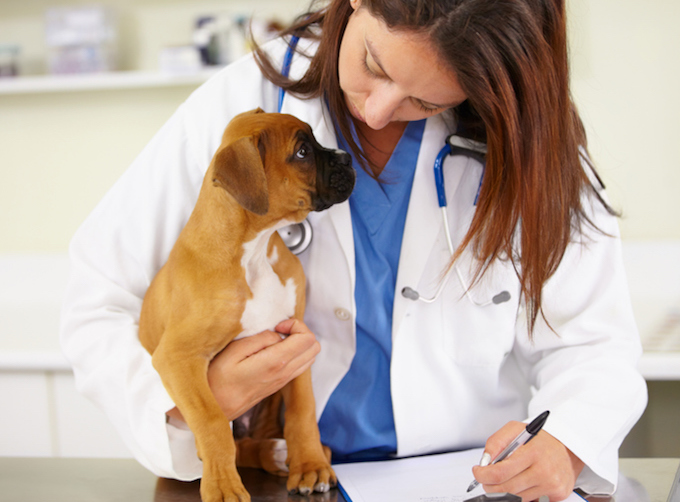Lung cancer (adenocarcinoma) in dogs involves the presence of malignant tumors in the lungs. The condition is the most common type of canine lung cancer.
Unfortunately, older dogs often suffer from the condition more than younger dogs. Additionally, the Boxer breed develops the condition more than other dogs.
Technically, the condition is also known as adenocarcinoma of the lung in dogs.
If you see the signs of the condition in your dog, then get to a veterinarian for a proper diagnosis and treatment.
Here’s what you should know about the symptoms, causes, and treatments for the condition.
Symptoms of Lung Cancer (Adenocarcinoma) in Dogs
The condition produces a range of symptoms. For instance, some of the most common symptoms include:
- Breathing problems
- Breathing too quickly
- Pain
- Appetite loss
- Acting lethargic
- Fever
- Muscle pain
- Coughing up blood
- Ascites
Causes of Lung Cancer (Adenocarcinoma) in Dogs

The cause of the condition is unknown. This means it is called idiopathic. However, secondhand smoke is suspected to be a cause of the condition.
Additionally, older dogs develop the condition more than younger dogs. Also, the Boxer breed is most at risk of it.
Treatments for Lung Cancer (Adenocarcinoma) in Dogs
Firstly, your vet will ask about your dog’s symptoms. Secondly, your vet will ask about your dog’s full medical history. This will include breed-specific problems.
Thirdly, a full physical examination will be carried out. Blood and urine tests will be taken. Additionally, chest X-rays can diagnose the condition.
Generally, treatment takes the form of surgery, chemotherapy, or radiotherapy. Sometimes, a combination of all three will be recommended. This will depend on your dog’s age and the severity of the condition.
While your dog is undergoing treatment, it is important to make them as comfortable as possible. Also, show them extra affection while dealing with the condition.
Have you ever cared for a dog who suffered from this condition? How did your vet help your dog recover? Let us know in the comments section below.









